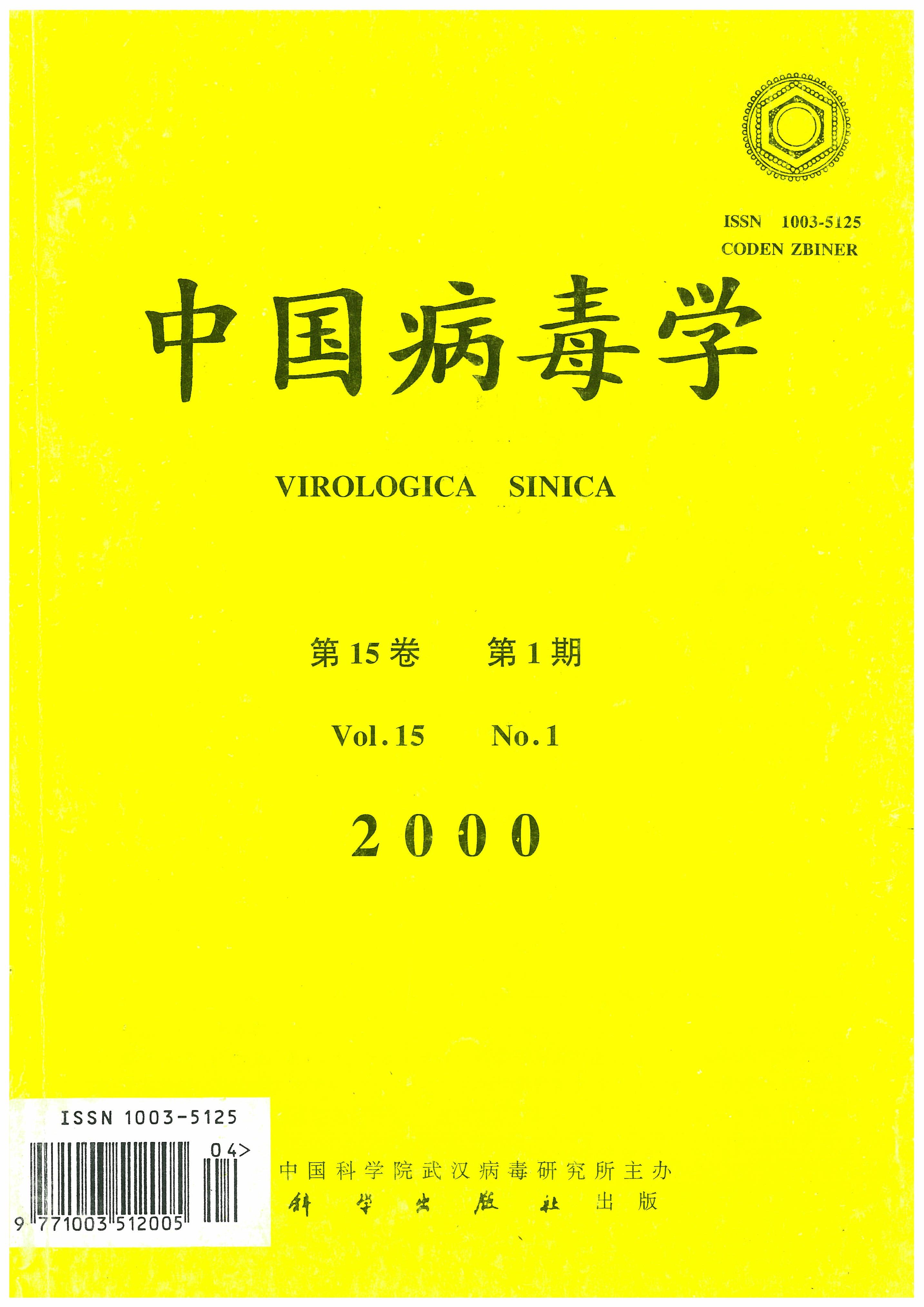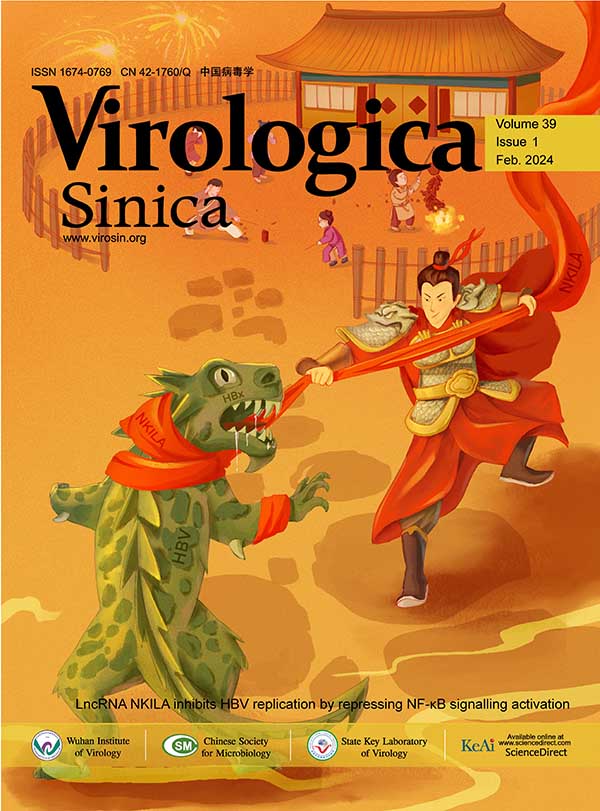人和动物病毒污染水体的研究已有多年 ,并取得了可喜的成果 ,其研究已从单纯的环境监测和卫生评价向机制和规律等纵深方向发展。分子生物学方法已深入到水病毒学领域 ,利用基因探针和扩增技术检测水体病毒已成为重要的研究方法 。然而针对水体植物病毒污染及其环境效应...
Thirteen indeterminate HBsAg samples were tested with 21 sorts of HBsAg kits, anti HBs and anti HBc kits. HBV DNA was detected with nested PCR. The results showed that all of HBsAg kits can not easily detected HBsAg from some HBV DNA positive samples. It indicated that HBsAg concentration may be lower or HBV may be S mutants in those samples. So it is necessary to improve the sensitivity of HBsAg and to develop the diagnostic kit to detect HBV S mutants.
Hantavirus Gou 3 strain has been reported by plaque reduce neutralization test (PRNT) being a neutralizing antigen broad strain. In this investigation the Gou 3 strain was purified by double picked up plaques and identified the types using PCR method. The results indicated that the Gou 3 strain virus is Seoul like virus.
Two recombinant plasmids were constructed. These include the coding regions for the core protein (pC) and for the core, E 1 and E 2 together (pCE 1E 2). These plasmids were transfected into mammalian cells to test their protein expression and injected into the quadriceps muscles of BALB/C mice to measure specific antibodies and cytotoxic T lymphocyte responses. All the recombinant plasmids were shown to express specific antigens transiently and stably in cells and elicited both specific antibody responses and specific cytotoxic T lymphocyte responses. The A value of anticore were 0.3580.096 (pC) and 0.4150.127 (pCE 1E 2). The CTL activity of pC was 18.65%5.71% and 20.07%11.11% of pCE 1E 2. Genetic immunization can aid the development of hepatitis C virus vaccines by allowing for the rapid construction and evaluation of different expression plasmids as potential immunogens.
The glycoprotein gene of human rabies vaccine strain (aG), one attenuated fixed strain (CTN 181) and two street viruses were sequenced and the amino acid sequences were deduced. The result shows that two street strains have two differences in nucleotide sequences and one in amino acid sequences, the nucleotide homology was higher compared with CTN (85.9%) than with aG (81.9%). Phylogenetic tree divided the street strains and the laboratory strains into two branches. High amino acid sequence similarity was present between the segments of the viral GP which may function as a recognition site for AchR and the receptor binding region of the neurotoxins; CTN strain had Q substitution at position 333 and the other virulent strains preserved 333 Arg. In all strains 319 glycosylation was existed, glycosylation on 37 is also relatively conserved. The amino acid constitution of antigenic site Ⅱ is identical in all compared strains, but on site Ⅲ some attenuated strains have amino acid substitution on position 333 and
Monoclonal antibody of F 3 hybridoma cell strain against RSV specific antigen was prepared by hybridoma and tested by indirect immunofluorescence and ELISA. It has neutralizing and fusion inhibiting activity. The neutralizing titres and fusion inhibiting titres of ascites of mice are 1∶128 and 1∶64 respectively. Clinical diagnosis by comparing McAb of F 3 strain with fixed McAb of commerical kit show that the positive according rate are 96.9% and negative according rate are 100%. F 3 hybridoma cell strain probably produces a monoclonal antibody against fusion protein of RSV.
Partial nucleotide sequences (location 4522-4761) from ORF1 of sporadic strains (G93 1,G93 2,G93 3 and G93 4) of acute HEV in Guangzhou were detected, the positive PCR products were purified, cloned and sequenced. In the result, the nucleotide sequences of G93 1, G93 3 and G93 4 strain are all the same to each other, and have a homology of 100% with the Xin Jiang 87A and Burma strain respectively. The G93 2 strain is different, the homology of this part of sequence with them is only 79.9%, but it has a homology of 99.2% with X S1 strain obtained from the acute phase serum of a patient with hepatitis E in Xiamen. In addition, the biological character of the G93 2 strain was studied, the result was as same as the 87A strain's. All the results show there is a variant subgenotype of HEV in the South of China besides the similar strain with Xinjiang, but they have the same biological character.
The p74 gene of SpltNPV was located at EcoRI 4.4 kb,XhoI 4.9 kb and BamHI 3.0 kb fragments by Southern blotting with AcMNPV derived probe. After cloning of the three fragments, restriction enzyme analysis was used to construct their restriction map. A region of 2?545 bp including p74 gene of SpltNPV was sequenced. The open reading frame of SpltNPV p74 gene was decided to be 1?974 bp long, which codes 658 amino acids. Comparison of the homology with other baculovirus p74 genes shows that SpltNPV p74 is 64% and 63% identical to that of AcMNPV and CfMNPV at the amino acid level.
The nuclear capsid protein gene (vp39) of Bombyx mori nuclear polyhedrosis virus (Chinese isolate, BmNPV Ch) was amplified by PCR and inserted into pGEM 3zf(+). The amplified vp39 gene (1 230 bp) was sequenced with silver staining dideoxy chain termination. The coding region is 1 053 bp, and code for 351 amino acids. Comparing with the vp39 gene of BmNPV Ja (Japanese isolate), the homology of the nucleotide and the amino acid sequences is 97.5% and 97.1% respectively. The BmNPV vp39 gene was inserted into the expression vector pRSET A, and transformed into E.coli BL21. This gene from BmNPV Ch is 9 bp longer than that of BmNPV Ja. The insertion of nine nucleotides is found in vp39 gene sequence of BmNPV Ch (CGA at 625 site and GTCGGC at 985-910). Although there are 17 site mutations, only 7 site mutations are replacement mutations. There was no effect to the hydrophilicity and charge of two isolates of VP39. The replacement of anino acids caused by the site mutations made the changes of the seco
The DNA polymerase gene of Buzura suppressaria nucleopolyhedrovirus (BusuNPV) was amplified by PCR using virus DNA template. The amplified fragment was cloned into E.coli via plasmid pGEM T. The fragment of insert was analyzed on an automated DNA sequencer. Its sequence showed that the insert has 2 379 nucleotides in length and 793 aa was predicated. Comparing with other six members of Baculoviridae , amaino acid sequence of the DNA polymerase of BusuNPV has 57% similarity with HzSNPV, and 39.6% with OpMNPV.
The ultrastructural alterations caused by the infection of two cucumber mosaic virus isolates were investigated. Spherical virus particles of CMV M 22, an isolate originally from Salvia splendens , scattered throughout the cytoplasm and aggregated into crystals in the vacuoles of tobacco cells. The existence of virus particles inside the chloroplast was not detected for this isolate. But virus particles were found being aggregated through the plasmodesma, that indicated the way of cell to cell movement of this isolate. Virus particles of CMV 8 S1, an isolate with necrosis satellite RNA and originally from naturally infected tobacco, scattered throughout the cytoplasm and in the vacuoles of abnormal chloroplasts. In the tobacco leaf cells natural infected by CMV 8 in the field, numerous spherical particles and abnormal chloroplasts were observed. The results suggest that ultrastructural alterations induced by different CMV isolates are quite variable. This is a direct evidence of satellite RNA involveme

















